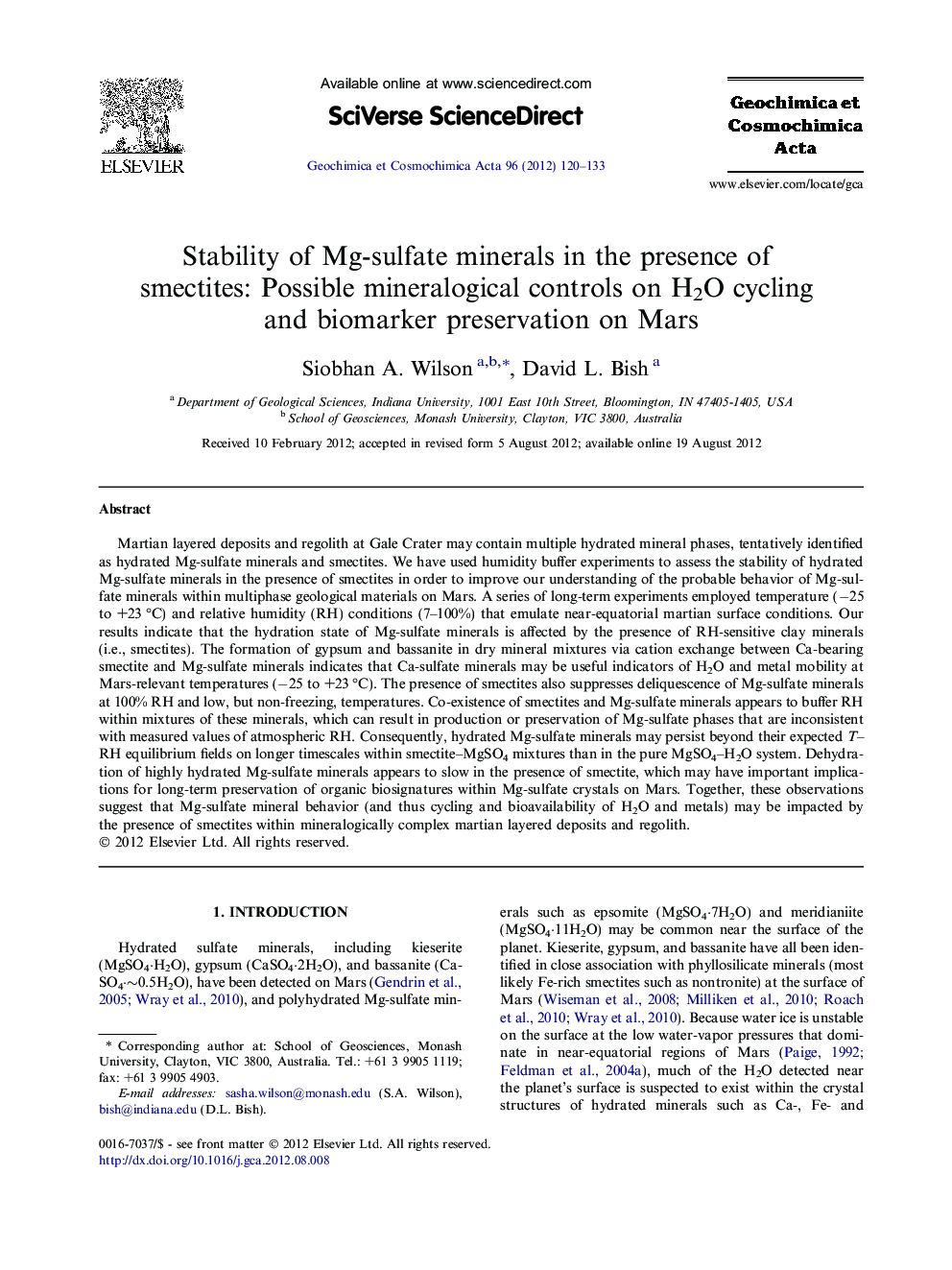| Article ID | Journal | Published Year | Pages | File Type |
|---|---|---|---|---|
| 6439193 | Geochimica et Cosmochimica Acta | 2012 | 14 Pages |
Abstract
Martian layered deposits and regolith at Gale Crater may contain multiple hydrated mineral phases, tentatively identified as hydrated Mg-sulfate minerals and smectites. We have used humidity buffer experiments to assess the stability of hydrated Mg-sulfate minerals in the presence of smectites in order to improve our understanding of the probable behavior of Mg-sulfate minerals within multiphase geological materials on Mars. A series of long-term experiments employed temperature (â25 to +23 °C) and relative humidity (RH) conditions (7-100%) that emulate near-equatorial martian surface conditions. Our results indicate that the hydration state of Mg-sulfate minerals is affected by the presence of RH-sensitive clay minerals (i.e., smectites). The formation of gypsum and bassanite in dry mineral mixtures via cation exchange between Ca-bearing smectite and Mg-sulfate minerals indicates that Ca-sulfate minerals may be useful indicators of H2O and metal mobility at Mars-relevant temperatures (â25 to +23 °C). The presence of smectites also suppresses deliquescence of Mg-sulfate minerals at 100% RH and low, but non-freezing, temperatures. Co-existence of smectites and Mg-sulfate minerals appears to buffer RH within mixtures of these minerals, which can result in production or preservation of Mg-sulfate phases that are inconsistent with measured values of atmospheric RH. Consequently, hydrated Mg-sulfate minerals may persist beyond their expected T-RH equilibrium fields on longer timescales within smectite-MgSO4 mixtures than in the pure MgSO4-H2O system. Dehydration of highly hydrated Mg-sulfate minerals appears to slow in the presence of smectite, which may have important implications for long-term preservation of organic biosignatures within Mg-sulfate crystals on Mars. Together, these observations suggest that Mg-sulfate mineral behavior (and thus cycling and bioavailability of H2O and metals) may be impacted by the presence of smectites within mineralogically complex martian layered deposits and regolith.
Related Topics
Physical Sciences and Engineering
Earth and Planetary Sciences
Geochemistry and Petrology
Authors
Siobhan A. Wilson, David L. Bish,
